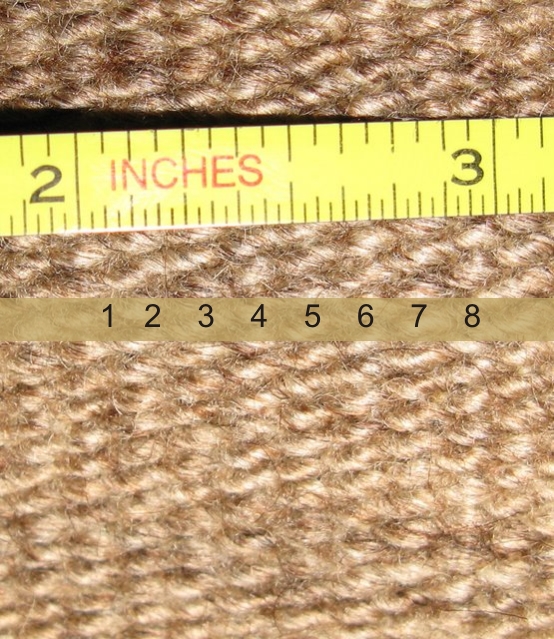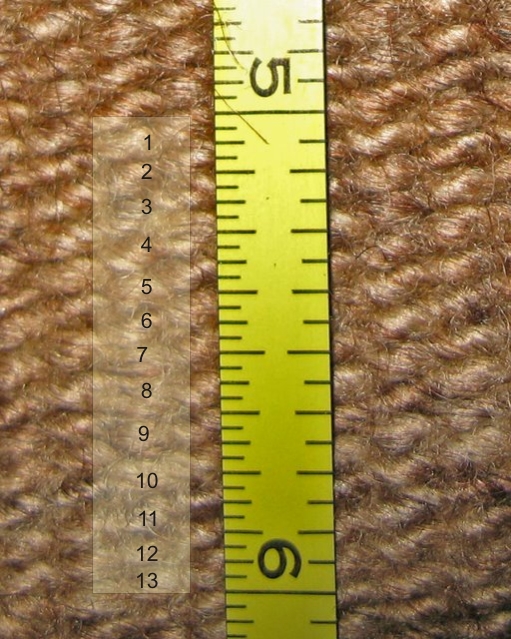Textile Analysis: Counting Warps and Wefts
One of the ways to gauge the quality of a textile is to count the threads in an inch of weaving. The more threads per inch, the finer the cloth. Anyone who has ever slept on 800 count sheets knows how much difference this can make. In Navajo pieces, both the warps and wefts are counted. These are numbers that you may see in auction listings or in scholarly works on Navajo weaving, and it is an indicator of the feel and drape of the fabric.
The warp threads are the threads that you don’t see. When a rug is woven, they are the vertical threads and they are completely covered by the weaving process. If there are warps showing, that’s a decrement in the value of the textile. To count the warps, use a ruler or measuring tape and lay it across the rug horizonally in an area where the pattern doesn’t interfere with a clear view of the weaving. It can be very hard to count threads when you’re trying to deal with the pattern at the same time. As you can see in the picture below, the warps show up as columns that you can count. If you have difficulty seeing up close, use a magnifying glass or magnifying ruler to help you. Here’s an example with the warps counted to help you get started:

Now, let’s count the weft threads. This can be a little trickier because the wefts are generally more irregular, but the idea is the same. Lay a tape measure along an area where your can see the wefts without too much interference from the pattern and count the weft bumps along one column of warp. Once again, I’ve shown you the count.

What’s the total weft count on this piece? Textile analysts can disagree here. Some will say the count is 13 rows per inch, reasoning that it takes two passes to make one row. They’re not weavers, but some of them are really good friends of mine anyway. A weaver will tell you that there are 26 rows, since the threads must be manipulated in each direction traveling from left to right and then right to left.
I would count this piece as 8 warps and 26 wefts per inch, a relatively blanket like weave with a nice drape. Remember that counts can vary in different parts of a textile, so don’t agonize over a difference of one thread here or there.
